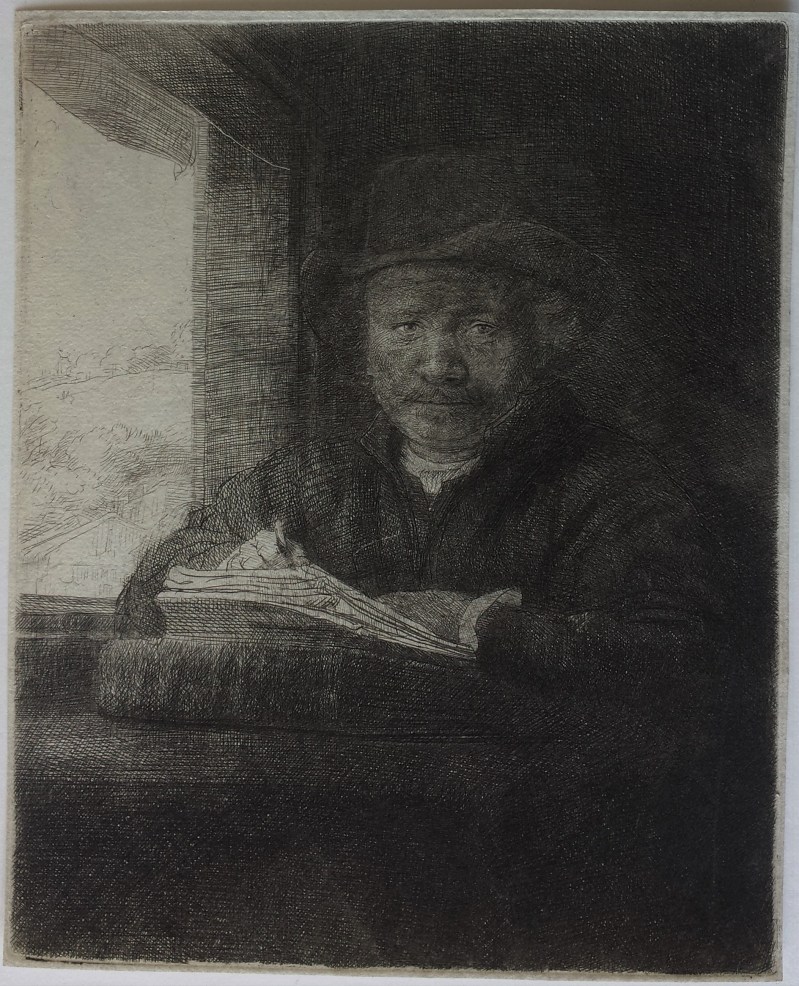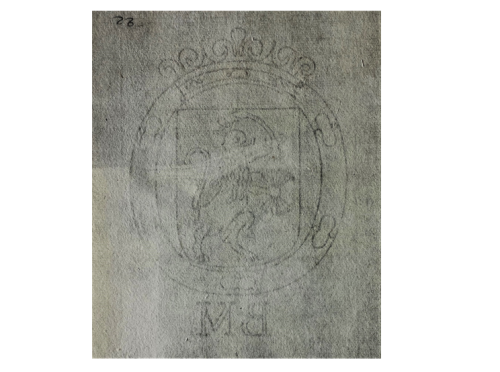REMBRANDT: Self-portrait etching at a window - 1648
SOLD
Etching and drypoint, 160 x 130 mm. Bartsch 22, Hind 229, Biörklund and Barnard 48-A, New Hollstein 240, V/IX.
Impression of the 5th state (of 9), with the two dots added in the upper left corner, but before any posthumous rework of the 6th state, in particular before the new lines redefining the contour of the right cheek of Rembrandt, the burnishing of his face and the vertical lines added on the folded cloth under his left hand.
Very fine impression, without the burr visible on some early impressions of the 4th state, but evenly and well printed; the plate is just beginning to wear out on the face and in the shadows ; two tiny stray hairs embedded in the ink during printing. In excellent condition. 1 to 2 mm margins all around the platemark.
Impression on laid paper with a Seven Provinces watermark (Hinterding: Seven Provinces A’-a-b). This watermark was noted by E. Hinterding and J. Rutgers on the only impression of the 5th state they mention in the New Hollstein volume (Rijksmuseum Amsterdam inv. RP-P-OB-287). E. Hinterding proved that the watermark Seven Provinces, A-a variant, was typical of the impressions from the plates which had not yet been reworked but on which two dots had been applied with the burin on the copperplate, usually in a corner.
These two dots, discovered for the first time by Krzysztof Kruzel, were applied on twenty-nine copperplates shortly after Rembrandt’s death by an unknown owner. The impressions printed from the plates with the two dots, called « dotted impressions » by E. Hinterding, date from around 1680-1700.
The copperplate of Self-portrait etching at a window was later sold to Pieter de Haan, Claude-Henri Watelet and Pierre-François Basan. From the 6th state, the plate was reworked and Rembrandt’s face was irredeemably altered.
References: E. Hinterding, Rembrandt as an etcher, 3 vols, 2006; E. Hinterding and J. Rutgers, New Hollstein, Rembrandt, 7 vols, 2013.




